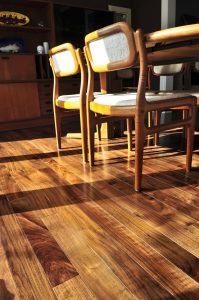
Floor Types
The underlayment you need can vary based on the floor that you are installing. Some applications will require higher moisture protection while others demand better acoustical qualities. While ECF provides top-notch moisture protection and sound-reducing qualities to your home, it’s important to know of the different options:
- Hardwood. This flooring application is attached with nails or staples. As is always a concern, the presence of moisture can wreak havoc on your nice floors. Placing hardwood floors in the basement will require a premium basement floor underlayment to ward off the moisture risks.
- Engineered hardwood. A fancier version of hardwood, this product is designed to better handle the changes that are associated with moisture and humidity. There are four accepted methods of installation for engineered floors, including glue, nails, staples, and free floating. An underlayment for hardwood includes the advantage of fixing minor imperfections in the subfloor that can equate to issues on the top surface. Acoustics are also an issue that needs to be rectified when laying down this more costly flooring.
- Laminate. A cheaper, more user-friendly product, laminate flooring is a wood-based material that expands and contracts with the elements. Because of this, an underlayment is needed. Laminate floors are also prone to issues with small imperfections and moisture. Therefore, an ideal flooring solution is needed to provide proper support and protection.
- Underlay-attached laminate. One option for saving time is to purchase laminate flooring that has the protected underlayment already attached to the bottom. While our cork flooring underlayment can be ideal for most applications, we do not recommend it here. Adding too much cushion can hamper stability, creating big problems with your floor’s surface.
Your floors will require different components based on a variety of factors. In nearly any case, the need for a strong material that protects against moisture and provides acoustical resistance is vital. ECF’s cork flooring underlayment is perfect here thanks to our dedication to quality and service. We like to state that everything is over-engineered for your satisfaction, and the results will not disappoint. Next time, we’ll look at other flooring underlayments and their effectiveness in real-life settings. Contact us today to learn more about this innovative product!


